MENU
The Electronic Scholarly Publishing Project: Providing access to classic scientific papers and other scholarly materials, since 1993. More About: ESP | OUR CONTENT | THIS WEBSITE | WHAT'S NEW | WHAT'S HOT
Comparative Timelines
The ESP Timeline (one of the site's most popular features) has been completely updated to allow the user to select (using the timeline controls above each column) different topics for the left and right sides of the display.
Select:
New Left Column
New Left Column
Dates
Decade
New Right Column
New Right Column
(no entry for this year)
1780
(no entry for this year)
 Mozart's opera "Idomeneo" premieres in Munich.
Mozart's opera "Idomeneo" premieres in Munich.
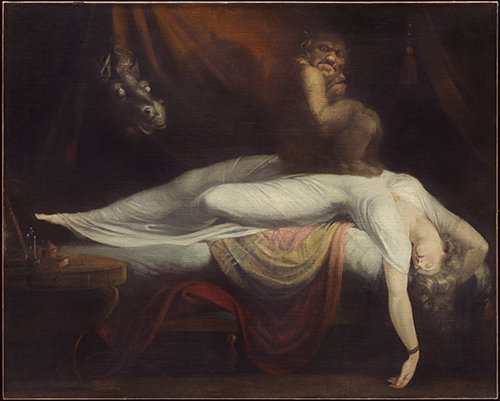 Painting by Henry Fuseli: The Nightmare shows a woman in deep sleep with her arms thrown below her, and with a demonic and apelike incubus crouched on her chest. The painting's dream like and haunting erotic evocation of infatuation and obsession was a huge popular success. After its first exhibition, at the 1782 Royal Academy of London, critics and patrons reacted with horrified fascination and the work became widely popular, to the extent that it was parodied in political satire, and an engraved version was widely distributed. In response, Fuseli produced at least three other versions.
Painting by Henry Fuseli: The Nightmare shows a woman in deep sleep with her arms thrown below her, and with a demonic and apelike incubus crouched on her chest. The painting's dream like and haunting erotic evocation of infatuation and obsession was a huge popular success. After its first exhibition, at the 1782 Royal Academy of London, critics and patrons reacted with horrified fascination and the work became widely popular, to the extent that it was parodied in political satire, and an engraved version was widely distributed. In response, Fuseli produced at least three other versions.
1781
(no entry for this year)
(no entry for this year)
1782
(no entry for this year)
(no entry for this year)
1783
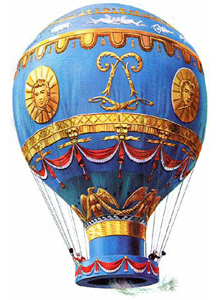 Joseph and Jacques Montgolfier make first public balloon flight.
Joseph and Jacques Montgolfier make first public balloon flight.
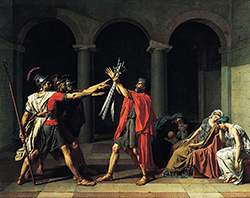 Painting by Jacques-Louis David: Oath of the Horatii (French: Le Serment des Horaces), is now on display in the Louvre in Paris. The painting immediately became a huge success with critics and the public, and remains one of the best known paintings in the Neoclassical style. It depicts a scene from a Roman legend about a dispute between two warring cities, Rome and Alba Longa. Instead of the two cities sending their armies to war, they agree to choose three men from each city; the victor in that fight will be the victorious city. From Rome, three brothers from a Roman family, the Horatii, agree to end the war by fighting three brothers from a family of Alba Longa, the Curiatii. The three brothers, all of whom appear willing to sacrifice their lives for the good of Rome, are shown saluting their father who holds their swords out for them. Aside from the three brothers depicted, David also represents, in the bottom right corner, a woman crying whilst sitting down. She is Camilla, a sister of the Horatii brothers, who is also betrothed to one of the Curiatii fighters, and thus she weeps in the realisation that, in any case, she will lose someone she loves. The painting is considered a paragon of neoclassical art.
Painting by Jacques-Louis David: Oath of the Horatii (French: Le Serment des Horaces), is now on display in the Louvre in Paris. The painting immediately became a huge success with critics and the public, and remains one of the best known paintings in the Neoclassical style. It depicts a scene from a Roman legend about a dispute between two warring cities, Rome and Alba Longa. Instead of the two cities sending their armies to war, they agree to choose three men from each city; the victor in that fight will be the victorious city. From Rome, three brothers from a Roman family, the Horatii, agree to end the war by fighting three brothers from a family of Alba Longa, the Curiatii. The three brothers, all of whom appear willing to sacrifice their lives for the good of Rome, are shown saluting their father who holds their swords out for them. Aside from the three brothers depicted, David also represents, in the bottom right corner, a woman crying whilst sitting down. She is Camilla, a sister of the Horatii brothers, who is also betrothed to one of the Curiatii fighters, and thus she weeps in the realisation that, in any case, she will lose someone she loves. The painting is considered a paragon of neoclassical art.
1784
(no entry for this year)
(no entry for this year)
1785
First balloon flight across English Channel (Jean-Pierre Blanchard and John Jeffries).
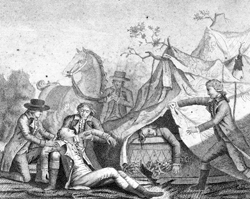 French balloonists Jean-François Pilatre de Rozier and Jules Romain are killed when their Royal Balloon crashes near Boulogne, France, June 15, 1785, in what is considered the first aerial disaster.
French balloonists Jean-François Pilatre de Rozier and Jules Romain are killed when their Royal Balloon crashes near Boulogne, France, June 15, 1785, in what is considered the first aerial disaster.
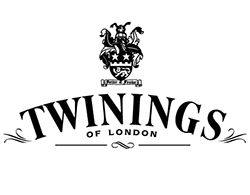 Twining's Tea creates a logo that is still in use today, making it the world's oldest, continuous use logo. The founder of Twinings was Thomas Twining from Painswick, Gloucestershire in England. He opened Britain's first known tea room at No. 216 Strand, London, in 1706; it still operates today.
Twining's Tea creates a logo that is still in use today, making it the world's oldest, continuous use logo. The founder of Twinings was Thomas Twining from Painswick, Gloucestershire in England. He opened Britain's first known tea room at No. 216 Strand, London, in 1706; it still operates today.
1787
(no entry for this year)
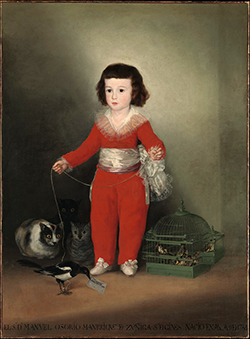 Painting by Francisco de Goya: Manuel Osorio Manrique de Zúñiga, also known as Goya's Red Boy. Vicente Joaquin Osorio de Moscoso y Guzmán (1756–1816), Count of Altamira, had hired Goya for several family portraits. Altamira held many titles and was also a director of the Banco de San Carlos. In 1786, after painting several portraits of the court, Goya was nominated painter to Charles III. This painting, from 1787–88, is of Altimira's youngest son, Manuel, who was born in April 1784 and died at age eight on June 12, 1792.
Painting by Francisco de Goya: Manuel Osorio Manrique de Zúñiga, also known as Goya's Red Boy. Vicente Joaquin Osorio de Moscoso y Guzmán (1756–1816), Count of Altamira, had hired Goya for several family portraits. Altamira held many titles and was also a director of the Banco de San Carlos. In 1786, after painting several portraits of the court, Goya was nominated painter to Charles III. This painting, from 1787–88, is of Altimira's youngest son, Manuel, who was born in April 1784 and died at age eight on June 12, 1792.
1788
(no entry for this year)
(no entry for this year)
1789
Bourbon Whiskey is first created by Elijah Craig in Bourbon, Kentucky.
ESP Quick Facts
ESP Origins
In the early 1990's, Robert Robbins was a faculty member at Johns Hopkins, where he directed the informatics core of GDB — the human gene-mapping database of the international human genome project. To share papers with colleagues around the world, he set up a small paper-sharing section on his personal web page. This small project evolved into The Electronic Scholarly Publishing Project.
ESP Support
In 1995, Robbins became the VP/IT of the Fred Hutchinson Cancer Research Center in Seattle, WA. Soon after arriving in Seattle, Robbins secured funding, through the ELSI component of the US Human Genome Project, to create the original ESP.ORG web site, with the formal goal of providing free, world-wide access to the literature of classical genetics.
ESP Rationale
Although the methods of molecular biology can seem almost magical to the uninitiated, the original techniques of classical genetics are readily appreciated by one and all: cross individuals that differ in some inherited trait, collect all of the progeny, score their attributes, and propose mechanisms to explain the patterns of inheritance observed.
ESP Goal
In reading the early works of classical genetics, one is drawn, almost inexorably, into ever more complex models, until molecular explanations begin to seem both necessary and natural. At that point, the tools for understanding genome research are at hand. Assisting readers reach this point was the original goal of The Electronic Scholarly Publishing Project.
ESP Usage
Usage of the site grew rapidly and has remained high. Faculty began to use the site for their assigned readings. Other on-line publishers, ranging from The New York Times to Nature referenced ESP materials in their own publications. Nobel laureates (e.g., Joshua Lederberg) regularly used the site and even wrote to suggest changes and improvements.
ESP Content
When the site began, no journals were making their early content available in digital format. As a result, ESP was obliged to digitize classic literature before it could be made available. For many important papers — such as Mendel's original paper or the first genetic map — ESP had to produce entirely new typeset versions of the works, if they were to be available in a high-quality format.
ESP Help
Early support from the DOE component of the Human Genome Project was critically important for getting the ESP project on a firm foundation. Since that funding ended (nearly 20 years ago), the project has been operated as a purely volunteer effort. Anyone wishing to assist in these efforts should send an email to Robbins.
ESP Plans
With the development of methods for adding typeset side notes to PDF files, the ESP project now plans to add annotated versions of some classical papers to its holdings. We also plan to add new reference and pedagogical material. We have already started providing regularly updated, comprehensive bibliographies to the ESP.ORG site.
ESP Picks from Around the Web (updated 06 MAR 2017 )
Old Science

Weird Science

Treating Disease with Fecal Transplantation
Fossils of miniature humans (hobbits) discovered in Indonesia

Dinosaur tail, complete with feathers, found preserved in amber.
Astronomy

Mysterious fast radio burst (FRB) detected in the distant universe.